 Hospital medicine is the fastest-growing medical specialty in the U.S., and it’s gaining popularity in other countries throughout the world.1 Although there are many similarities in how hospital medicine is practiced in different countries, profound differences also exist due to a variety of factors.
Hospital medicine is the fastest-growing medical specialty in the U.S., and it’s gaining popularity in other countries throughout the world.1 Although there are many similarities in how hospital medicine is practiced in different countries, profound differences also exist due to a variety of factors.
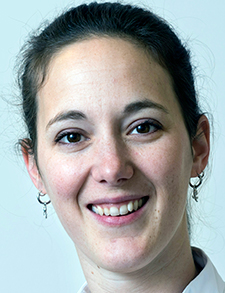
Dr. de Boom
In the Netherlands, for example, differences are notable early on, beginning with the training process. “U.S. hospitalists are trained in a specific specialty, whereas hospitalists in the Netherlands are trained in different fields and can work in different specialties,” said Marjolein de Boom, MD, FHM, a hospitalist in the geriatrics department at Treant, a 200-bed community hospital in Emmen, the Netherlands.
Because citizens of the Netherlands have compulsory health insurance in which cooperation with primary care and public health is necessary, a hospitalist’s training also includes a mandatory internship in primary care.
In some hospitalist departments, hospitalists rotate on different wards, e.g., three months in surgery, three months in pulmonology, and then three months in neurology, Dr. de Boom said. Also, hospitalists mostly work on day shifts during the week, both to facilitate the greatest continuity of care, and due to a limited number of hospital physicians.
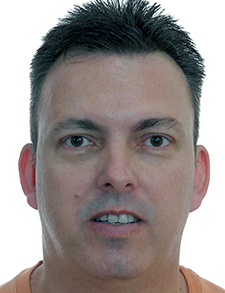
Dr. Barcellos
Hospitalists in Brazil perform many of the same tasks as U.S.-based hospitalists, said Guilherme Brauner Barcellos, MD, SFHM, a hospitalist in the department of quality at Hospital de Clínicas de Porto Alegre in Porto Alegre, Brazil, an 860-bed academic hospital, but some aspects of care are still in the developmental stages. Specifically, like U.S. hospitalists, Brazilian hospitalists have a strong focus on direct patient care and efficiency. Unlike U.S. hospitalists, Brazilian hospitalists have little emphasis on quality and patient safety and aren’t centered on value-based care and new remuneration models.
Although some heterogeneity exists, confusion in concepts is commonplace. “Many people still mistake the comprehensive hospitalist model with others that only focus on urgent inpatient needs while the main physician is not physically present,” Dr. Barcellos said. Sometimes a hospitalist’s work is restricted to bureaucratic tasks and procedures.
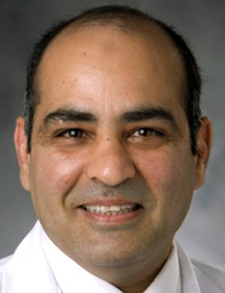
Dr. Khan
In Pakistan, the care-delivery model for hospitalists is still very traditional. An internist provides both inpatient and outpatient care. “Unfortunately, the healthcare system doesn’t see value in dedicated full-time inpatient consultants (hospitalists) for a variety of reasons, e.g., a lack of knowledge of the U.S. system and a lack of support from larger private healthcare institutions as well as federal and provincial governments,” said Muhammad Haroon Khan, MBBS, a diplomate of the American Board of Internal Medicine, a consultant hospitalist, and a physician director informaticist in the chief medical informatics office at Aga Khan University Hospital, a 700-bed academic tertiary care hospital in Karachi, Pakistan.
“Due to a lack of resources, critical patients are commonly managed in general wards or special care units with limited resources,” Dr. Khan said.
Overcoming challenges
Proving their value has been a significant challenge for international hospitalists. This is particularly problematic in the Netherlands because the government decides the number of training spots for specialists and their allocation. Currently, no government-funded training spots for hospitalists exist.
“Some hospitals recognize hospitalists’ added value, however; currently hospitals are funding training for approximately 15 hospitalists for their own use,” Dr. de Boom said. In addition, “more medical specialties are acknowledging that physicians with more general views should lead patient care on hospital wards. Nonetheless, they aren’t willing to give up their training spots from government funding.”
To address this obstacle, Dr. de Boom recommends conducting and publishing more research, in collaboration with established hospital-medicine departments, that proves hospitalists’ value and creates recognition for this specialty to get structural financing for medical training.
Along these lines, Dr. Khan said a significant hurdle is acceptance by healthcare authorities—in both the private and government sectors—to understand the value hospitalists bring to the healthcare industry. “I think hospitalists can help to lower inpatient and critical care costs and provide safe and efficient care,” he said. “The sooner our healthcare policymakers realize that, the sooner we will have well-integrated healthcare systems.”
Proving their value is also a challenge for Brazilian hospitalists. “Many organizations consider hospitalists to be ‘super residents’,” Dr. Barcellos said. “If hospitalists could learn how to better demonstrate their accomplishments and value, then hospitals would place a greater value on their work as generalists.”
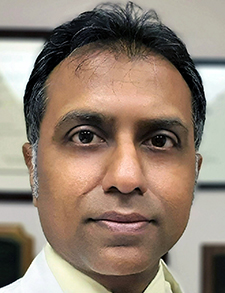
Dr. Kartha
Anand Kartha, MD, MS, SFHM, head of hospital medicine at Hamad Medical Corporation in Doha, Qatar, an academic health system with 2,600 beds across the corporation, reports an initial lack of knowledge about the hospital medicine model of care, which was also a challenge in the U.S. at the beginning of the hospital medicine movement in the 1990s.2 “Delivering visible improvements by hospitalists is a powerful way to overcome this challenge,” he said. “Partnering with other hospitalists globally and helping your institution succeed are other great ways to grow this model internationally.”
Another challenge for Brazilian hospitalists is that many have multiple part-time contracts rather than one full-time contract. “Physicians feel more secure having more than one job,” Dr. Barcellos said. “They fear losing a position and not having any work. Having stronger physician and hospital relationships, with clear goals and mutual trust, could lead to more hospitalists having one full-time position.”
Biggest benefits
Despite some challenges, hospitalists said their work has its rewards, too. Hospitalists in the Netherlands provide general care to clinically admitted patients. “Hospitalists have opportunities to expand their knowledge as they work in different kinds of medical specialties and hospital settings,” Dr. de Boom said.
Brazilian internists who formerly worked at more than one medical facility and now work as full-time hospitalists at one institution report great satisfaction with a more organized, less chaotic life. “They have more time to take care of their own physical and mental health,” Dr. Barcellos said. “And, in parallel, they deliver improvements, such as reducing the length of hospital stays, which is well-documented.”3
As a hospitalist, Dr. Kartha has found deep joy and personal satisfaction by making such a positive impact on many aspects of healthcare quality, such as making inpatient care safer and more efficient as well as improving access for patients.
Because Qatar has individuals from more than 100 nations living there, Dr. Kartha sees the country as offering a unique opportunity to build relationships with both patients and providers from diverse backgrounds and learn from their cultures and experiences. Many opportunities to develop new global partnerships with world leaders in academics and operations exist.
Despite hospital medicine being a newer field in Pakistan, Dr. Khan believes it can revolutionize how inpatient care is provided in low- and middle-income countries where most of the inpatient care is quite fragmented and plagued with a lack of infrastructure, resources, and good healthcare systems, as well as high costs, he said. Hospitalists can fulfill most of these needs and help improve population health both in public and private settings.
Hospitalists Meet Across the Pond: Key Insights from ECIM 2024
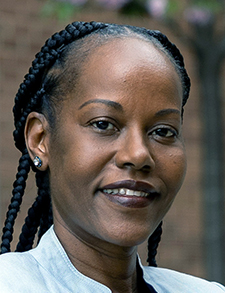
Dr. Kisuule
As an attendee at The European Congress of Internal Medicine (ECIM) 2024, SHM’s president, Flora Kisuule, MD, MPH, SFHM, director of the division of hospital medicine at Johns Hopkins Bayview Medical Center in Baltimore, a 550-bed academic hospital, reports that there’s a great interest in the field of hospital medicine both in Europe and beyond.
“Many delegates visited SHM’s booth,” said Dr. Kisuule. “They asked many questions about what a ‘hospitalist’ means and how we practice.”
ECIM 2024, held March 7 to 9 in Istanbul, Turkey, is the annual meeting of the European Federation of Internal Medicine and brings together delegates from various national internal medicine organizations in Europe. Dr. Kisuule’s attendance, along with two other SHM delegates, marked the third official attendance by SHM’s representatives.
Dr. Kisuule said that ECIM’s leadership has a keen interest in collaborating with SHM. Some ways to work together include developing educational materials and having joint sessions at their respective conferences. “These collaborations would lend legitimacy to the budding concept of hospital medicine in Europe,” she said.
Some insights Dr. Kisuule gleaned from the meeting are that general internists, particularly in southern Europe, e.g., Portugal and Spain, practice in similar ways as U.S.-based hospitalists. “They see inpatients and manage them directly or co-manage surgical patients for the duration of their hospital stay,” she said.
In comparison, in the United Kingdom, acute care internists manage patients for 48 to 72 hours after emergency department personnel determine that a patient can’t be discharged. If a patient requires hospitalization beyond 72 hours, then they are admitted to the most appropriate specialty service.
Dr. Kisuule also said that European countries share many of the same healthcare challenges that hospitalists deal with routinely in the U.S., e.g., length of stay, throughput, behavioral health, and burnout.
“I was surprised to hear that we faced some of the same challenges, but it was also exciting because this opens up opportunities for collaboration,” Dr. Kisuule said. For example, Spain and some other countries have had hospital at home for years. This practice is widespread and helps keep patients out of the hospital. Although this is a growing practice in the U.S., our country is years behind other countries.”
“It was gratifying to discuss and learn from each other,” Dr. Kisuule said.
Karen Appold is an award-winning journalist based in Lehigh Valley, Pa. She has more than 25 years of editorial experience, including as a newspaper reporter and a newspaper and magazine editor.
You may also enjoy this article from the Journal of Hospital Medicine Hospital medicine and humanitarian aid: Navigating disasters with resilience and collaboration.
References
- Kisuule F, Howell E. Hospital medicine beyond the United States. Int J Gen Med. 2018;11:65-71.
- Wachter RM. Hospitalists in the United States—mission accomplished or work in progress? N Engl J Med. 2004;350(19):1935-6.
- Daltoé T, Grohs LB, et al. Hospital medicine as a security tool: evaluation of the hospitalists in the Brazilian public health care system. Article in Portuguese. Rev Soc Bras Clín Méd. 2013;11(4). Available at: https://www.sbcm.org.br/ojs3/index.php/rsbcm/article/view/39/37. Accessed April 25, 2024.